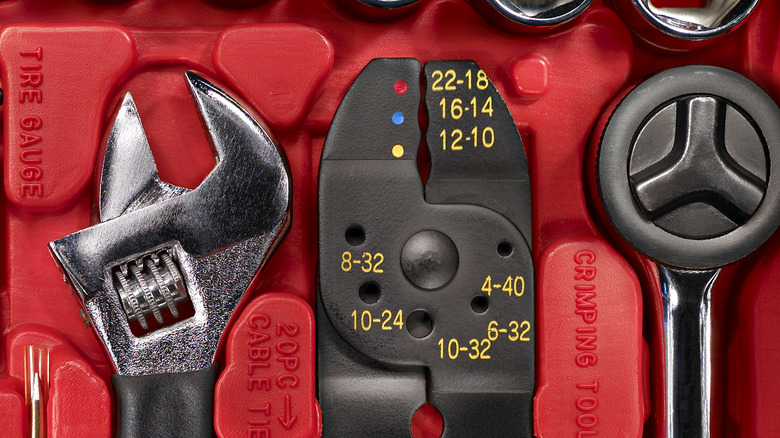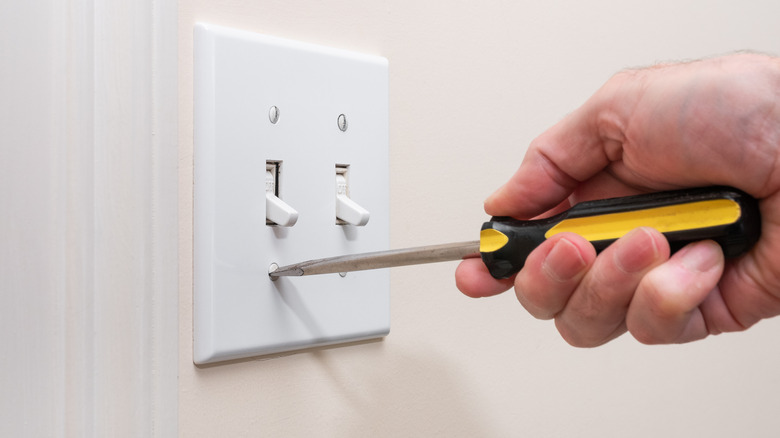The Wire Cutter Hack For Home Upgrade Installations You'll Wish You Knew Sooner
We may receive a commission on purchases made from links.
Professional tools often hold mysteries that DIYers never unpuzzle — hidden features on common tools that you've been missing out on, like that weird spike on a tube cutter and all those holes in a wire stripper. The spike is probably for counterattacking evil ninjas, and some of the holes are for bending wires. But the other openings are unbelievably useful and well-designed bits of genius you actually need. They're for cutting bolts commonly used in electrical work to length. It's a need that arises more than you'd think because of the variety of circumstances in which you install or replace lighting fixtures, your electrical outlets, and other electrical doodads.
In fact, you probably need the bolt shears a little more than a pro electrician, since a professional is likely to have every imaginable screw length sorted neatly into bins or nestled in the sawdust and wire bits at the bottom of every nearby toolbox, cup holder, and pocket. (Okay, sure, you actually need the spikes and wire-bending holes, too. The spikes are for reaming cut pipes, which is pretty important, and using the bending holes help you to control the resulting bend's radius.)
Some device and fixture manufacturers include snap-off bolts for some uses, but that's a three-sizes-fit-all solution that doesn't always actually help much. Better to cut the bolts precisely to length using the right tool. Your multi-purpose wire strippers are the right choice because they're already in your hand when you're doing electrical work — and for a few other obscure reasons.
How, why, and which bolts?
Let's take a step back for a broader view of what all this is about. Electrical boxes, devices, and fixtures mostly use three common bolt sizes: 6-32, 8-32, and 10-32. (Lots of people refer to these as screws rather than bolts, probably because they're almost never used with nuts.) These numbers describe the diameter and thread count of the screws — 6-32 bolts are commonly used for devices like receptacles, while 8-32 bolts are most often used for mounting electrical boxes and mounting fixtures to those boxes. 10-32 bolts are usually for attaching ground wires. Most strippers, including the Klein Tools K1412 Dual NM Cable Stripper/Cutter (our favorite home-wiring tool), will come with threaded holes for 6-32 and 8-32 bolts at a minimum. Other tools, like Southwire's MP61 6-In-1 Multi-Purpose Stripper, accommodate other sizes like 10-24 and 4-40 bolts.
To cut a bolt, you thread it through the appropriate hole until the location of your cut is where the two scissoring parts of the wire strippers meet. Because of the design of these pliers-like tools, the bolts are sheared rather than pinched as they would be with cutting pliers. This results in a much cleaner cut than the pinched cut you get with normal wire cutters. When you back the bolt out of the stripper, the threaded mechanism is designed to clean up any imperfections left in the threads by the cutting process. This restoration is a process called "thread chasing," and it ensures the bolt will work without any additional fiddling with burrs and other flaws.

